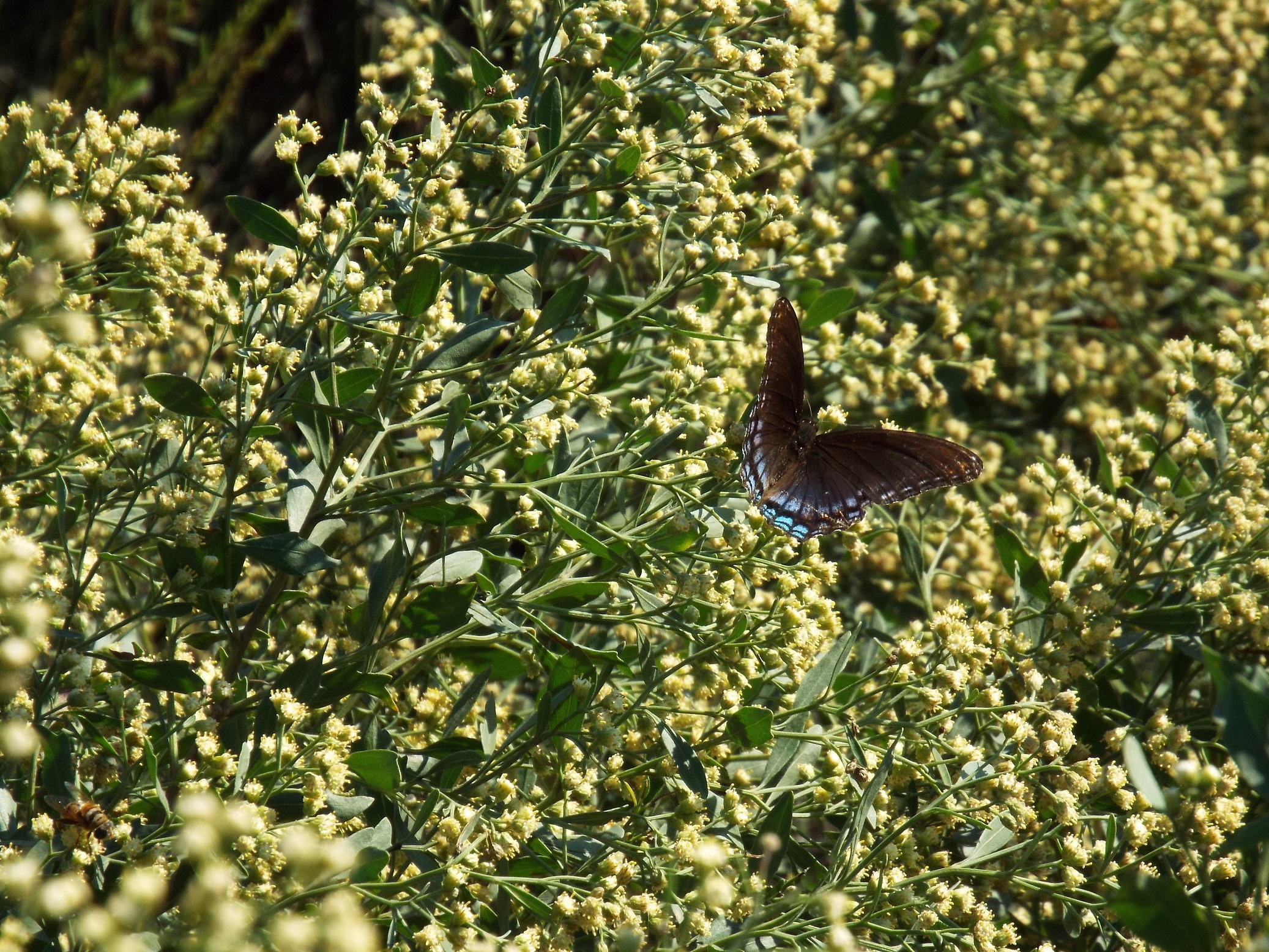
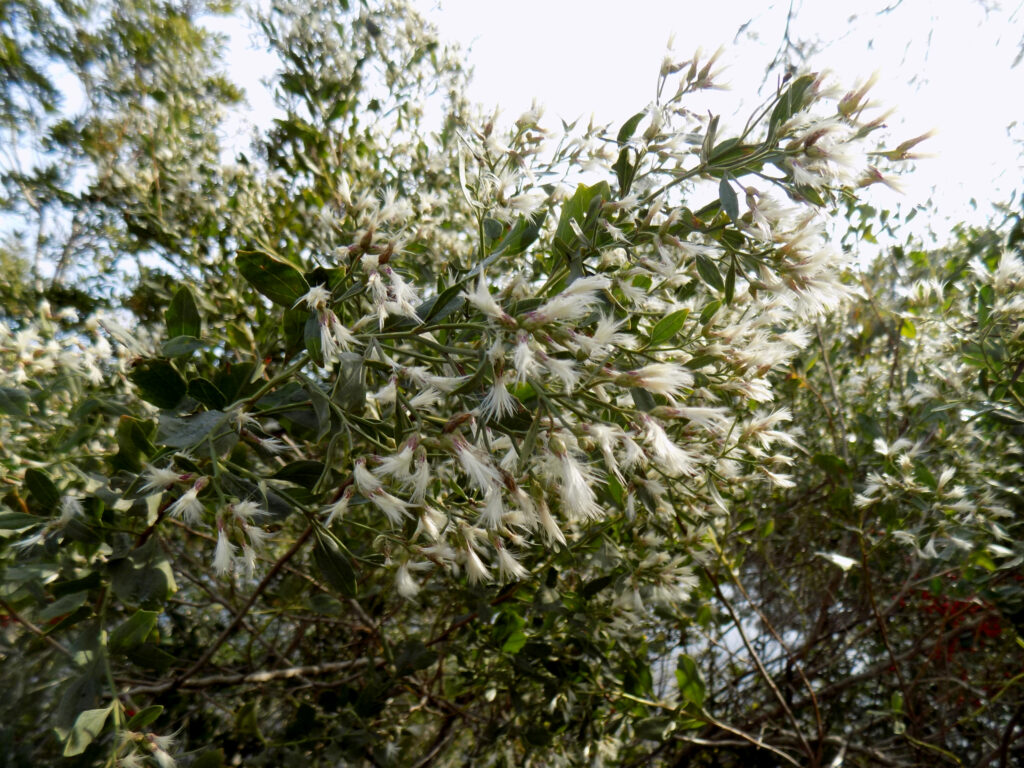
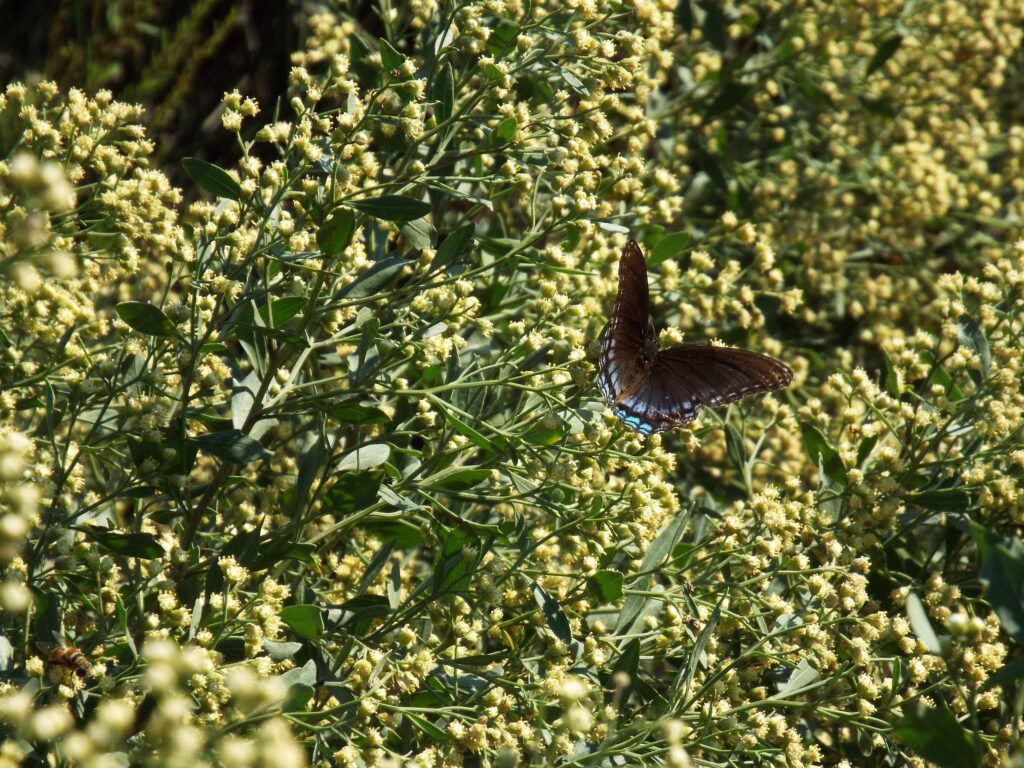
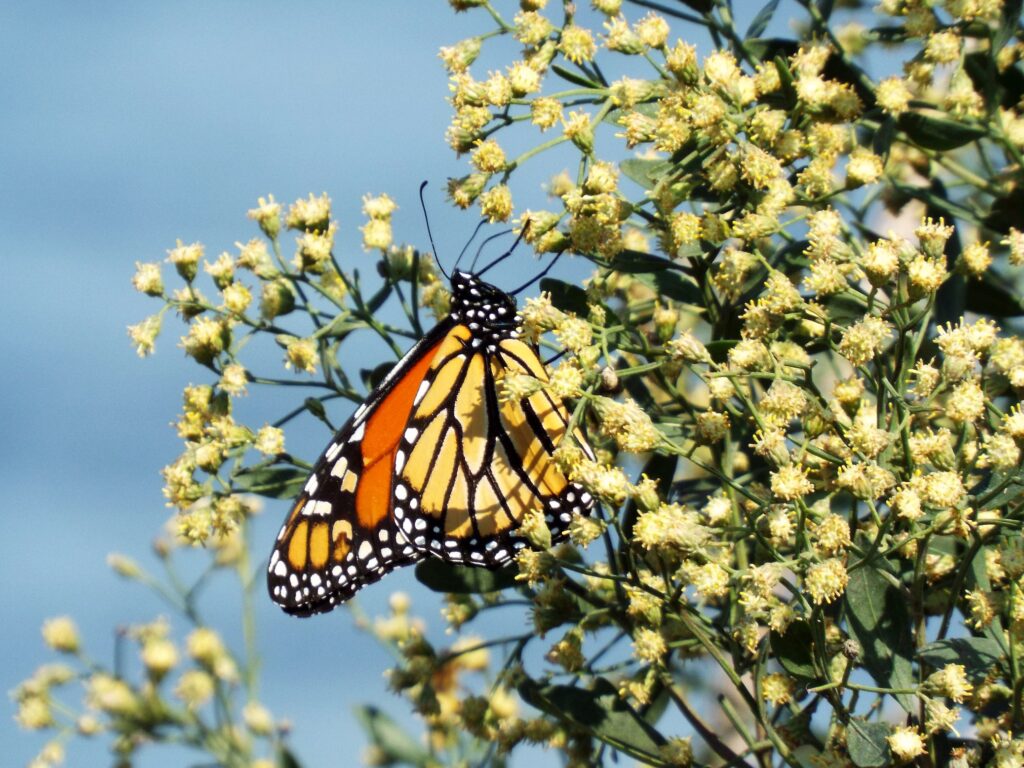
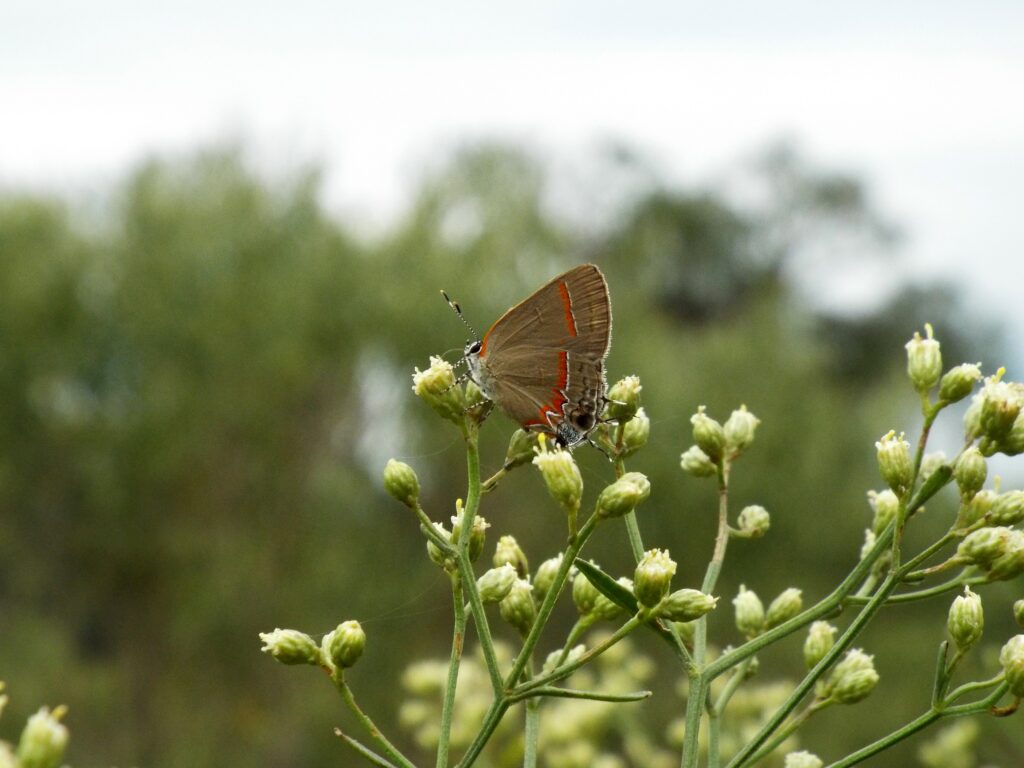
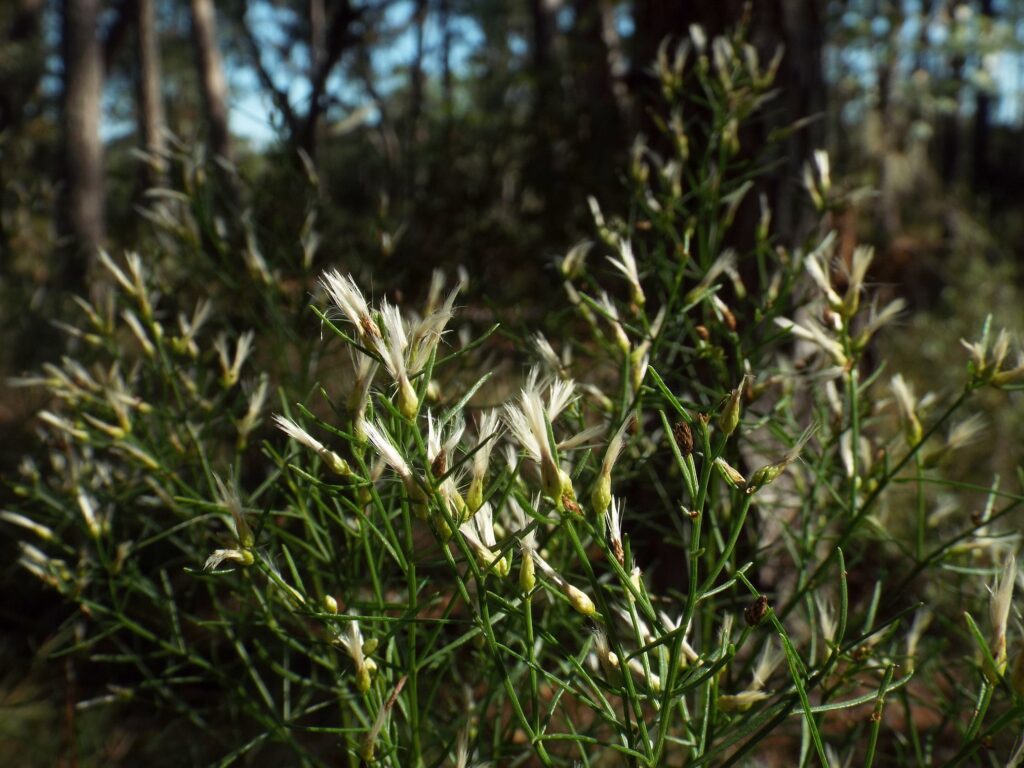
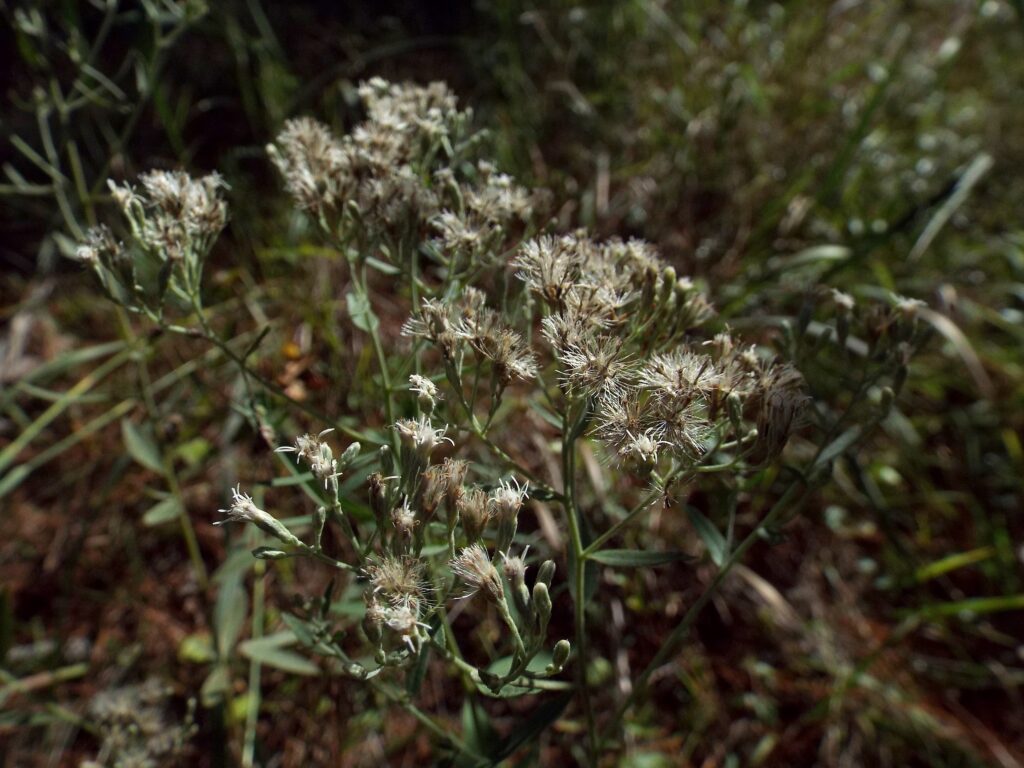
This week for Flora and Fauna Friday, we’re looking at a genus of flowering bushes known as Baccharis.
Baccharis and the species within it are known by many names: Groundsel, False-willow, Silverling, Coyote-bush, Broom, or usually just Baccharis. There are three species found in our area: Silverling (Baccharis glomerulifolia), Saltwater False-Willow (Baccharis angustifolia), and Groundsel-tree (Baccharis halimifolia). These species are rather similar in appearance and habits but differ distinctly in the shape of their leaves and flowers. So I’ll touch on how they differ first.
Of the three, Silverling is probably the hardest to locate species in our state. It’s found exclusively along wetlands in the coastal plain. It has densely packed, compact, pale yellow flowers and silver succulent leaves (Not pictured). Saltwater False-willow is found exclusively on the edges of maritime forests and hammocks in saltwater tidal zones. It has small white flowers and narrow, succulent leaves. Groundsel-tree is by far the most common and is found on wetland edges and otherwise wet soil throughout the state. It has pale yellow flowers and leaves of highly variable shape that are usually light green to silver in color.
All of these species are salt tolerant, large shrubs with dense evergreen foliage and a scrubby appearance. They prefer full sun and grow on the edges of wetlands. They bloom in mid to late fall each year and resemble a snow laden bush when their silky white seeds begin to mature. Interestingly, Baccharis is a member of the Head Flower family, Asteraceae. This is a massive family of predominantly smaller, herbaceous plants. It includes plants like Sunflowers, Coreopsis, Bonesets, Goldenrods, Dandelions, Thistles, Asters, pretty much anything that resembles one of those, and many more. (I’ll talk about what defines a Head Flower on a later date.) However, it contains only a very few woody plants like Baccharis.
Baccharis is considered a weed by many. Its prolific flowers produce thousands of windblown seeds per bush. These seeds can float on the wind for miles and find their way into almost every patch of bare Earth, where they’re ready to germinate come spring. This means they often show up on pond edges, the edges of structures, neglected gardens, fallow fields, and fence rows with regularity. Their scraggly appearance, relatively short lifespan, and brittle wood don’t win them any points with landscapers either. However, there’s always a silver lining. Baccharis prefers to grow in sunny areas on wetlands edges, which means it is often found on the edges of dikes, causeways, and ponds where it provides excellent erosion control. It’s quick growing roots rapidly stabilize the soil and its soft, brittle wood means it’s likely to lose branches during a wind storm instead of uprooting and damaging a water control structure. Baccharis species are also fantastic nectar sources for pollinators. They provide a huge quantity of nectar to insects like bees, flies, wasps, and butterflies at the end of the growing season once most sources are beginning to dwindle with the coming of fall.